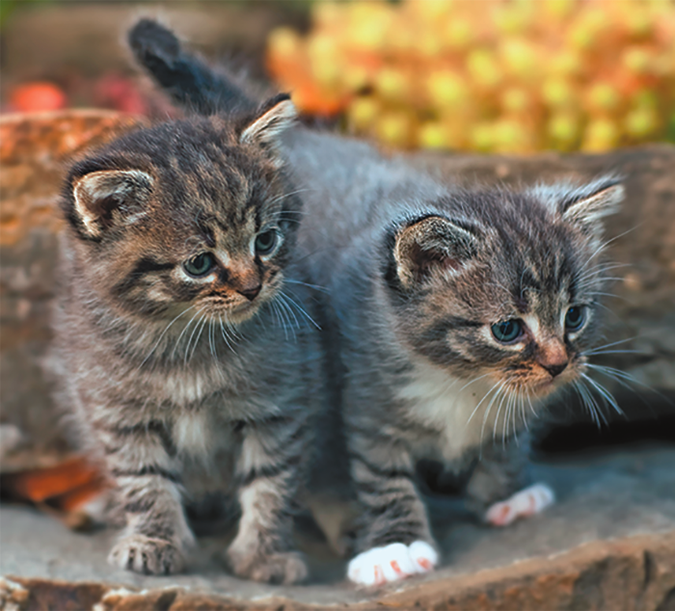Anemia is the state where a cat has too few red blood cells. Red blood cells carry oxygen to the tissues. They circulate for 70 to 80 days in cats before being removed from the circulation and replaced by the bone marrow. Since red blood cells carry oxygen and nutrients to tissues, a loss of these cells is a serious problem and can be fatal.
Because an anemic body is starving for oxygen, one of the first signs of anemia is lethargy. Affected cats will have little energy to play. If you look at the gums, they may be very pale or jaundiced (yellow) due to red blood cell destruction. In extreme cases, your cat may have trouble breathing. Respiration and heart rates may be increased as your cat tries to compensate for the lowered oxygen delivery due to a lack of red blood cells.
Depending upon the cause, you may also notice a fever and loss of appetite (due to an infection/inflammatory response) and/or melena (black stools due to digested blood) or discolored urine that may suggest internal red blood cell loss/destruction.
Causes of Anemia
Anemia may be caused by blood loss (usually due to trauma with internal or external bleeding), destruction of red blood cells (infection, disease, parasites), or decreased production of red blood cells (autoimmune disease, poor nutrition, chronic illness). For kittens, a major cause is flea infestations. Fleas and ticks feast on blood, which can be especially devastating to a tiny cat. The hookworm parasite, which feeds on blood, may cause anemia in cases of severe infestation.
Along with directly causing blood loss by feeding, blood-sucking insects can spread diseases like feline infectious anemia (FIA), which is caused by the Mycoplasma haemofelis parasite that parasitizes red blood cells. FIA is usually spread through cat-to-cat contact and infected fleas. A cat’s natural defense systems usually destroy the infected cells, but a cat can be reinfected. Some cats will retain some of the parasites at a low level and, if stressed, will suffer another bout of anemia.
Perhaps the most common cause of anemia in cats is feline leukemia virus (FeLV). It affects 2 to 3% of cats in the United States, although its incidence has been greatly lowered “since the development of an effective vaccine and accurate testing procedures,” says the Cornell Feline Health Center. (See http://bit.ly/FLV-Cornell for more information.)
Additional possible causes of feline anemia include:
-Bladder-wall damage
-Cancer
-Gastric ulcers
-Hemangiosarcoma
-Kidney disease
-Liver disease
-Spleen damage
-Toxins
Autoimmune hemolytic anemia also can occur, usually secondary to feline leukemia, immunodeficiency, or feline infectious peritonitis (FIP).
Outdoor cats are at a greater risk of anemia than indoor cats due to exposure to parasites and infectious diseases, and the increased possibility of trauma.
While anemia can result from dietary inadequacies, this is rare if your cat is eating a good-quality commercial food.
Diagnosis and Treatment
Diagnosing the cause of anemia requires your veterinarian to put on his or her detective hat, take a full history, and order bloodwork. Blood tests often include a complete blood count (including hemoglobin and hematocrit), serum biochemistry, and urinalysis. In some cases, a bone marrow biopsy, ultrasound, or x-rays may be performed.
Not surprisingly, treatment depends upon the cause. Obviously, parasitic infestations require treatment that kills the parasites. Corticosteroids or other immunosuppressive drugs are important for autoimmune diseases. Blood transfusions (and blood typing, see upcoming issue) may be necessary for severe cases.
Nutritional supplements are rarely used, unless the cause is malnutrition. Feeding a high-quality food will give your cat the nutrients he needs to regenerate those critical red blood cells.




